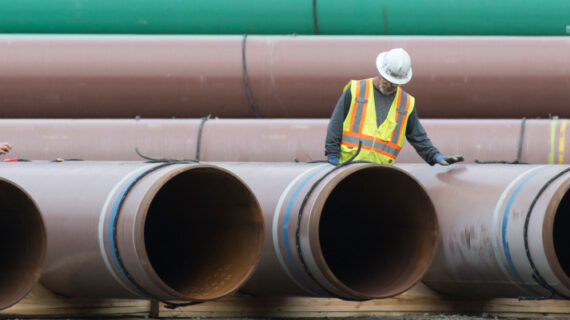- Canadian astronaut Jeremy Hansen is heading to the moon as part of a NASA-led mission and believes Canada is better off collaborating with NASA. He encouraged the Canadian Space Agency to remain a key partner of NASA rather than to develop its own moon missions.
- Hansen emphasized the importance of meaningful collaboration between Canada’s CSA and the United States’ NASA, emphasizing that a large number of technological advancements that have enabled the Artemis II mission have resulted from Canadian innovation.
- Hansen also said he feels strongly that Canada’s future in space lies in the possibility of increased space technology commercialization, and while space technology development is one area where we've made some ground in Canada, we're behind "with respect to really enabling the commercialization of our technologies and making sure those industries and the jobs of the future do stay in Canada.”
Canadian astronaut Jeremy Hansen is heading to the moon as part of a NASA-led mission and believes Canada is better off collaborating with NASA than going it alone. When asked about the potential for Canada to have its own Moon landing missions, he encouraged the Canadian Space Agency (CSA) to remain a key partner of NASA rather than to develop its own moon missions.
Colonel Jeremy Hansen will be the first Canadian to go on a mission around the Moon as the only non-American on the NASA-led Artemis II mission, which will be the first crewed mission to the Moon since the Apollo missions in 1972. The 10-day-long Artemis II expedition, projected to launch in November 2024, involves launching the state-of-the-art Orion shuttle into deep space, hopefully leading to a lap around Earth and the Moon and maybe even a space walk.
During an interview with The Hub after a presentation at the Ontario Science Centre last week, Hansen said that Canada’s potential in space “is enormous.” He explained that NASA’s leadership allows countries like Canada to shine, utilizing its technical prowess and extraordinary levels of “genius” in many space-related fields to make giant leaps for humanity.
Hansen emphasized the importance of meaningful collaboration between Canada’s CSA and the United States’ NASA, comparing the benefits of international cooperation on climate science to the challenge of space exploration. Hansen said, “If everybody is trying to solve [climate change] with their own systems and replicate to have their own data, this is not as powerful as everybody contributing to a common system that we all have a stake in and that we all believe in.”
Hansen pointed out that a large number of technological advancements that have enabled the Artemis II mission have resulted from Canadian innovation. He pointed out that Canada is a “world leader in space technology development,” such as the revolutionary Canadarm. A new iteration of Canada’s robotic space arm will be used on the Artemis II mission as Canada’s contribution to the international partnership with NASA.
Given Canada’s high level of space-related expertise, Hansen feels strongly that Canada’s future in space lies in the possibility of increased space technology commercialization. Hansen said that space technology development “is one area where we’ve made some ground in Canada, but we’re behind with respect to really enabling the commercialization of our technologies and making sure those industries and the jobs of the future do stay in Canada.” He affirmed that once Canadians feel that their ideas can “be supported,” and they “can make serious contributions to the world,” Canada will be at the forefront of space commercialization and beyond.

Hansen said that it is doubtful that any Canadian will be on more than one or two of the future Artemis missions. These Artemis missions will aim to result in lunar landings. These missions will, if successful, be reminiscent of the 1961 moon landing when Neil Armstrong and his crew put their boots on the Moon’s surface, which, Hansen commented, is still an incredible feat even when considering the remarkable technological advancements that have been made since then.
The Artemis II is the first step of many that lead to a deeper understanding of the solar system than ever before. NASA plans to deploy lunar landers and rovers, build a space station near the Moon called the Lunar Gateway, and, eventually, use the Moon as a launchpad to go to Mars. It is increasingly likely that Canadians will play a pivotal role in the success of these missions, goals, and operations through the country’s world-class space innovation industry.




